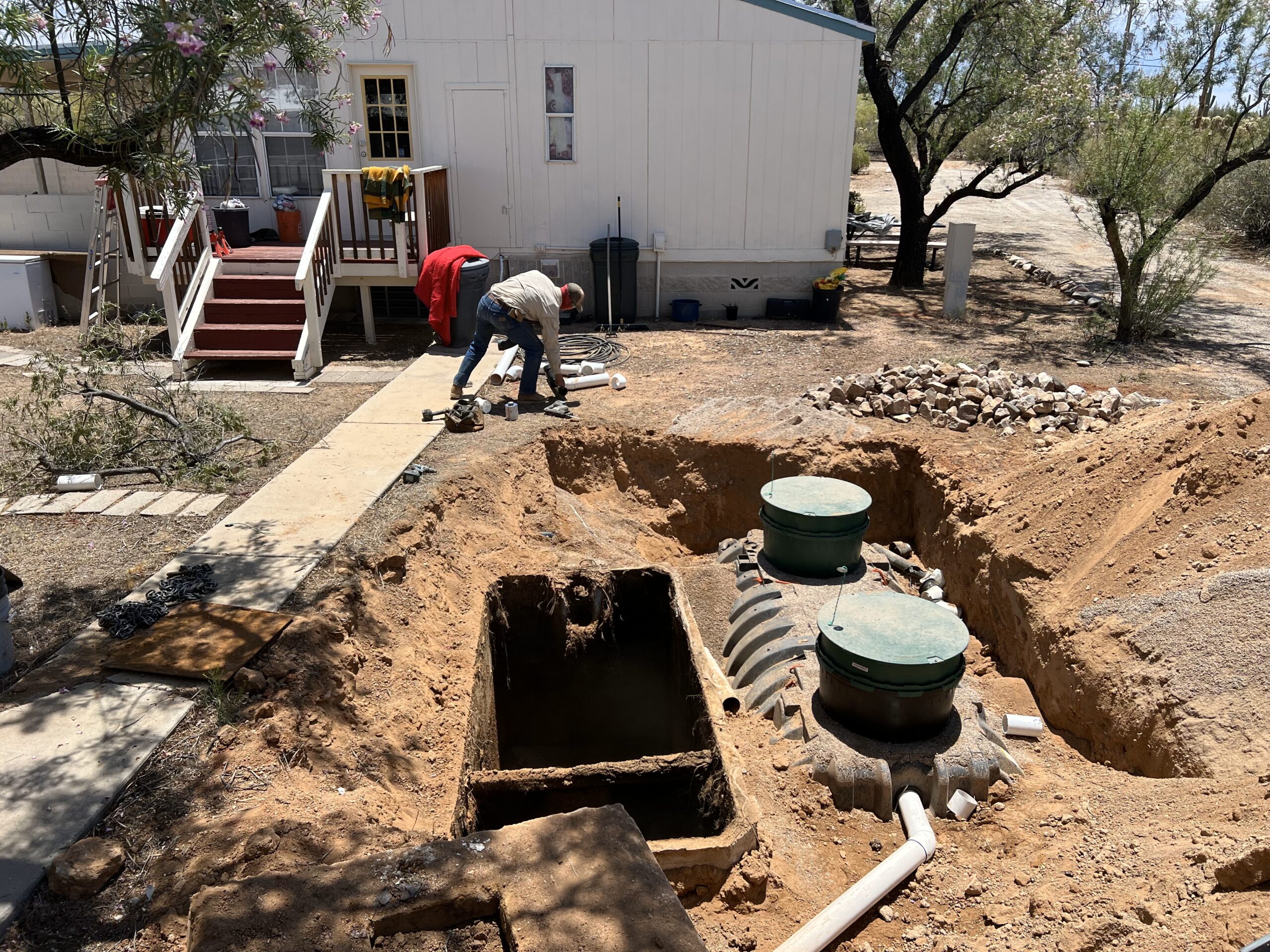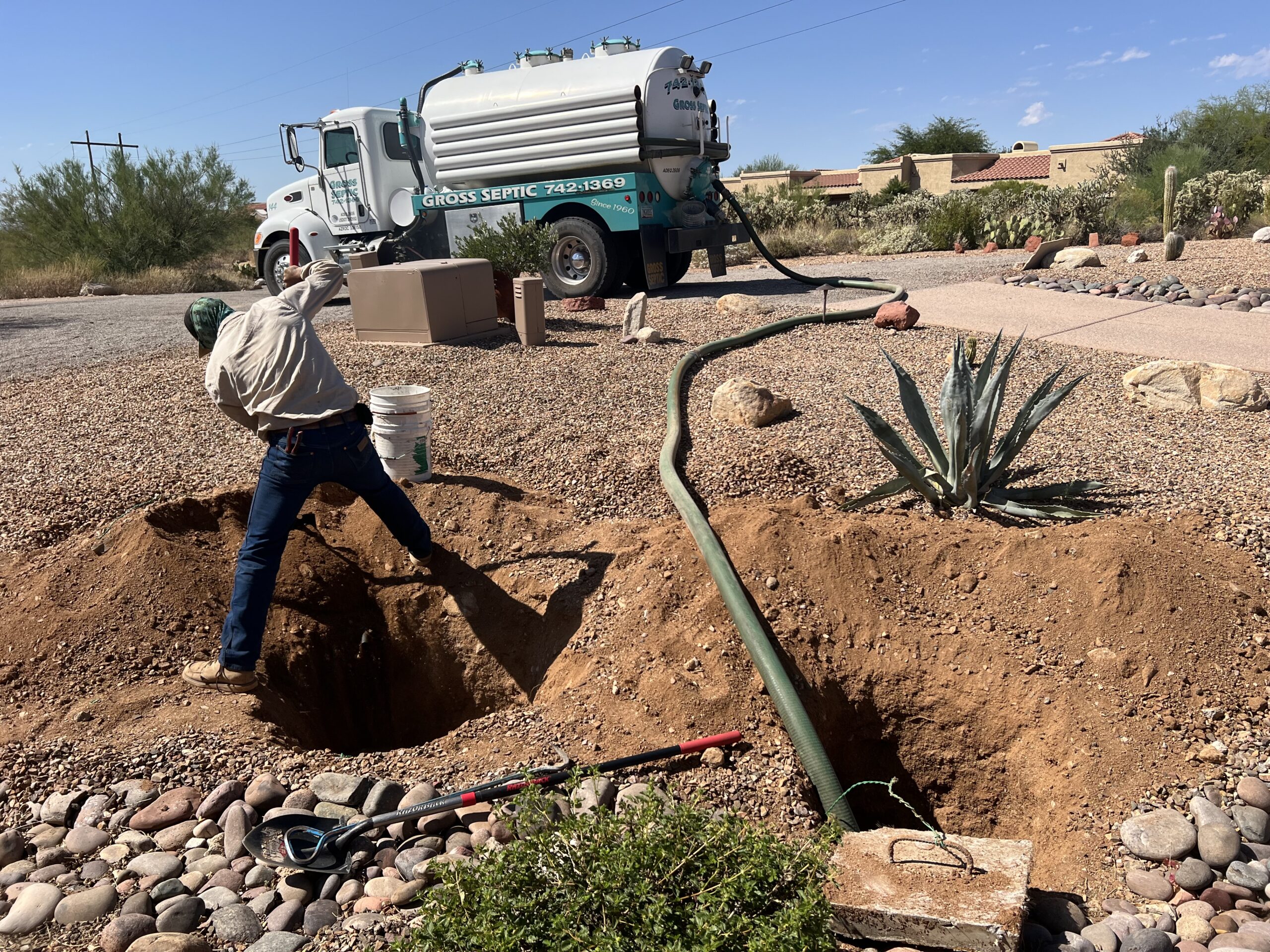


At Gross Septic Pumping, we believe informed customers are empowered customers. That’s why we’ve created this guide to explain the basics of septic systems, how they function, and what you can do to keep yours in good working order.
A septic system is an underground wastewater treatment structure, commonly used in rural areas like many communities in and around Tucson. It consists of two main components: the septic tank and the leach field (also called a drain field). Together, they treat and dispose of household wastewater in a safe and natural way—right on your property.
Wastewater from your sinks, toilets, showers, and washing machine flows into the septic tank, where solids and liquids are separated and partially treated. The clarified liquid (effluent) then flows into the leach field, where it is naturally filtered by the soil.


The septic tank is a watertight container buried underground, usually made of concrete, fiberglass, or polyethylene. As wastewater enters the tank, it naturally separates into three layers:
Baffles inside the tank help guide the flow of water and prevent solids from escaping into the leach field. Over time, the sludge and scum layers build up and need to be pumped out to prevent them from clogging the system. Regular septic tank pumping is essential—typically every 3 to 5 years, depending on household size and water usage.
Once the partially treated water exits the tank, it flows into the leach field, which is a network of perforated pipes laid in shallow, gravel-filled trenches. These pipes evenly distribute the wastewater across the field, allowing it to slowly seep into the surrounding soil.
The soil acts as a natural filter, removing harmful bacteria, viruses, and nutrients from the water before it eventually returns to the groundwater supply. For this process to work effectively, the leach field must be properly sized, positioned, and maintained.
If the leach field becomes clogged or saturated, wastewater can back up into the home or pool on the surface—both of which signal a serious issue.
Understanding how your septic system works also means knowing what warning signs to look for. If you notice any of the following, it’s time to call for professional service:
Early detection is key. What starts as a small issue can quickly turn into a costly and disruptive repair.
A well-maintained septic system can last 25 to 30 years or more. To protect your investment, follow these basic tips:
These simple habits can help you avoid unnecessary repairs and keep your system running smoothly.
Whether you need a new system, a routine inspection, or emergency repair, we’re here to help with honest answers and expert service.
For more support with your septic system—whether it's routine pumping, repair, or a full system consultation—contact Gross Septic Pumping. We serve Tucson and surrounding areas with dependable care, real answers, and fast response times. Call today to speak with someone who truly understands how septic systems work and how to keep yours in great shape.

Serving Tucson and Southern Arizona Since 1960
We’re a locally owned and operated company specializing in septic tank pumping, inspections, and installations across Tucson, Sahuarita, Marana, Vail, Catalina, and surrounding communities. With over 60 years of experience, our team is dedicated to providing reliable service, clear answers, and fast turnaround for both residential and commercial properties.
Whether you need a routine pump-out, a real estate septic inspection, or a full system installation, Gross Septic Pumping has the tools and expertise to get the job done right. We answer the phone 7 days a week from 6:00 a.m. to 5:00 p.m. so you can speak directly with someone who can help.
Call us today at (540) 742-1369 – we're here to take care of your septic needs with honest, dependable service.
Serving Tucson, Sahuarita, Vail, Marana, Picture Rocks, Avra Valley, Catalina, and the surrounding areas.
Call: (520) 742-1369
or
Email: Brian@GrossSeptic.com